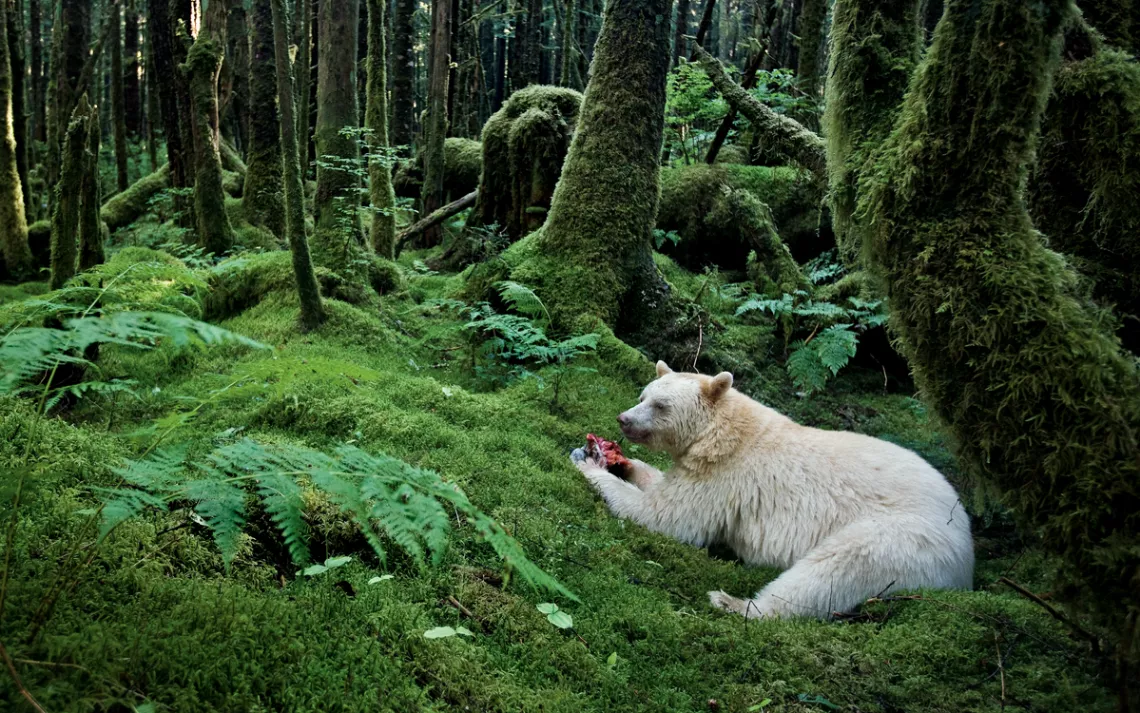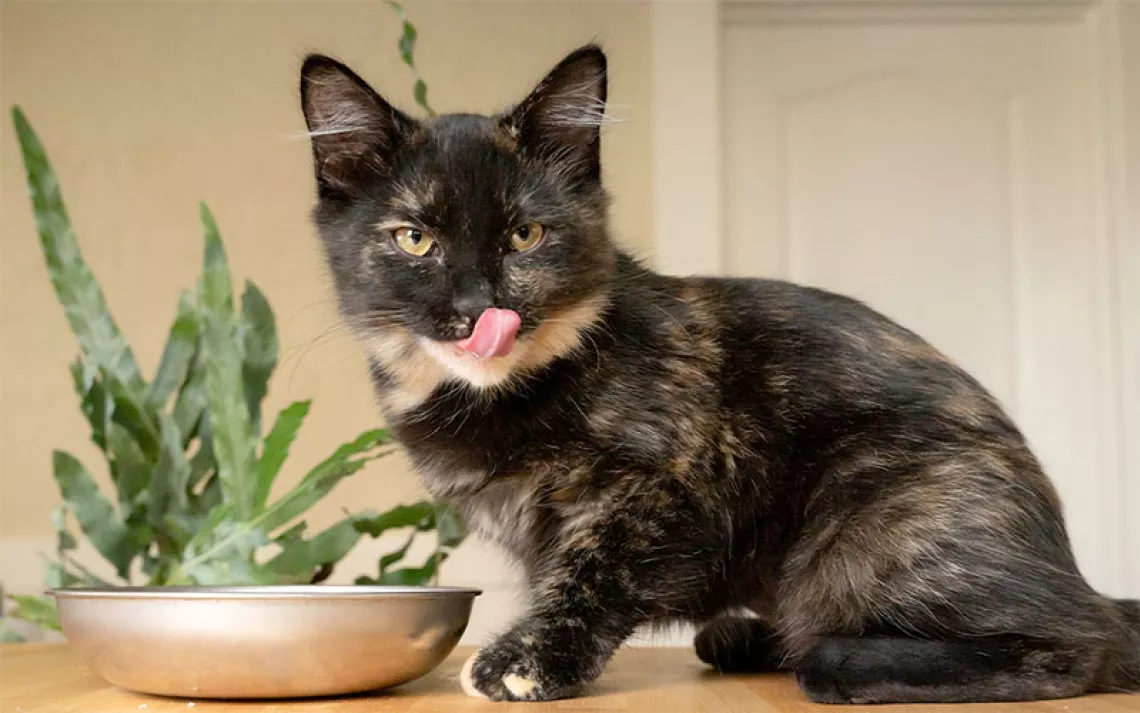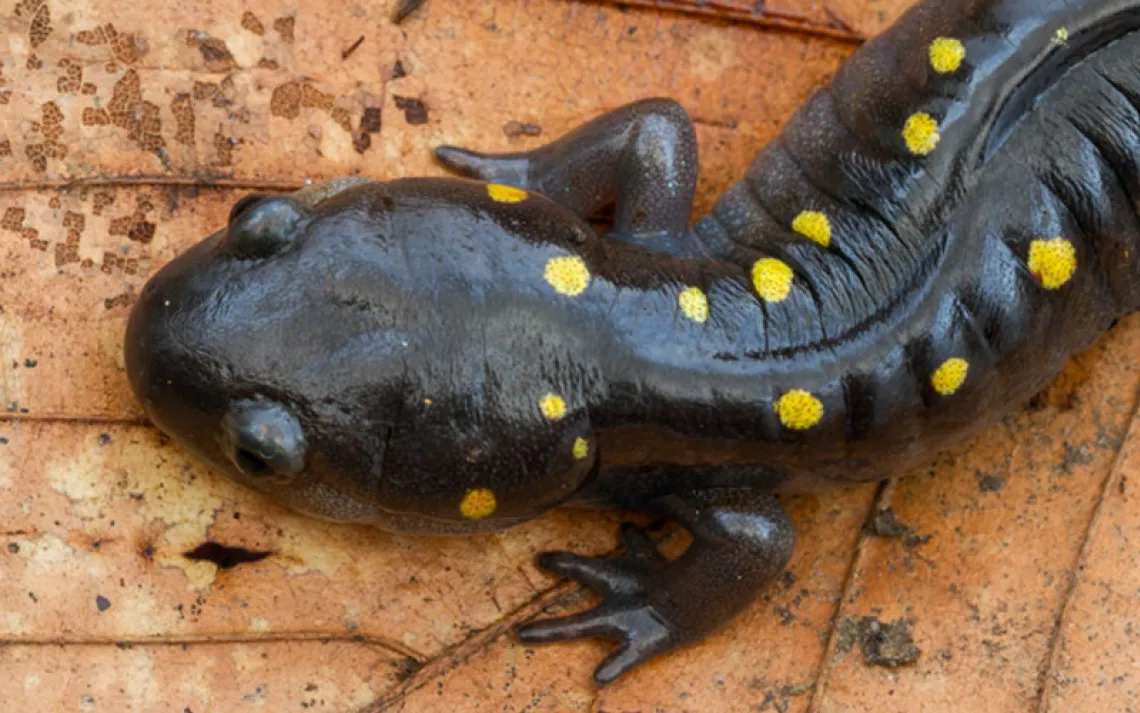The Spirit Bear
A secret creature comes to the forefront

Photo By Paul Nicklen
In the 1800s, the First Nations of British Columbia's central coast kept the existence of moksgm'ol—also known as the spirit bear—a secret. They didn't hunt the white bears and didn't want outsiders to hunt them either.
A single nucleotide change from G to A causes these black bears to be born with fur in luminous shades of pale gold and cream. This only occurs with any frequency where recessive genes can congregate relatively undisturbed. In the absence of hunters, brightness is an advantage: Seen from underwater—a salmon's-eye view—a platinum bear disappears into a bright sky. Mass spectrometry analysis of the fur of white-phase black bears shows that it can contain up to 6 percent more salmon than the hair of the dark-colored ones.
In the late 1980s, industrial logging arrived on the central coast, which had until then been protected by its inaccessibility. The struggle over the forest became a struggle over names. The Canadian government called it the North and Central Coast Land Use Planning Area. First Nations and environmentalists countered with a name that stuck: the Great Bear Rainforest. In order to save the forest, the bears were transformed from secrets into celebrities, and spots where the white-phase bears were most common were set aside as protected areas.
The First Nations began studying the bears in collaboration with outside scientists. They didn't want to tranquilize the bears or fit them with radio collars—that seemed disrespectful. Instead, they set up scratching posts in the forest. Winter fur was something the bears wanted to get rid of.
When the fur samples were analyzed in a lab, they showed that the spirit bear gene was less common but more widely dispersed than previous research had shown. Half the bears carrying it were traveling outside protected areas. Any black bear—even far away from the islands off the coast where the spirit bears were most common—potentially carried the gene.
In a world with different priorities, such genetic flamboyance might be more common. In the Kuril Islands, a few brown bears in each generation are born with pale coloring. A Japanese study theorized that they persisted because the Indigenous Ainu people left them alone. The existence of a bear the color of champagne contemplating a salmon carcass on a cradle of hallucinatory green depends not only on who has power but also on who chooses not to use it.
2004
British Columbia begins negotiations with 24 First Nations over the fate of the province's central coast rainforest.
2006
BC announces that the spirit bear is the "official animal" of the province.
2016
BC officially recognizes the name Great Bear Rainforest.
This article appeared in the Summer quarterly edition with the headline "Spirit of the Forest."
Explore
Take a Sierra Club trip to British Columbia. For details, see sc.org/outings.
 The Magazine of The Sierra Club
The Magazine of The Sierra Club



